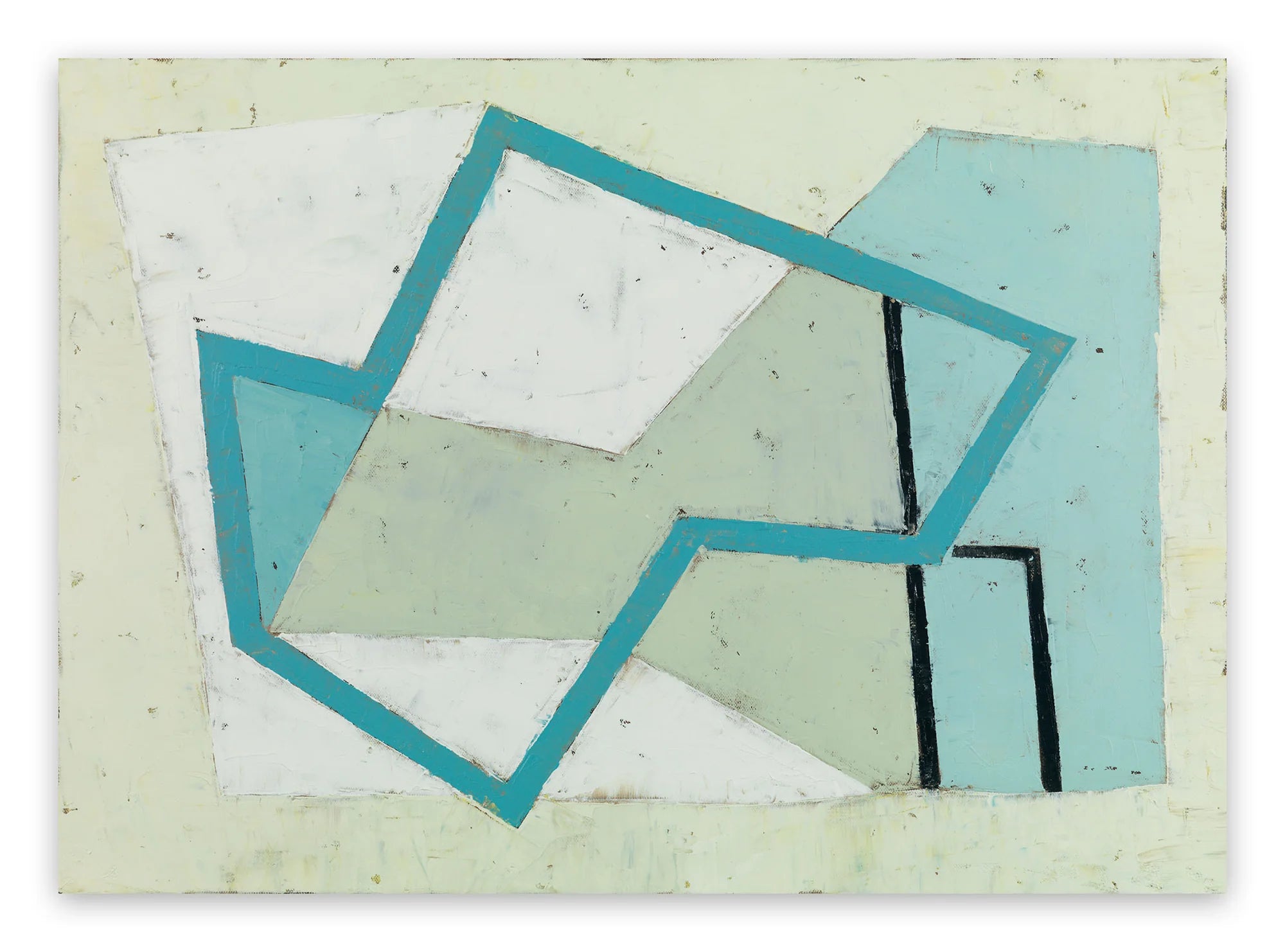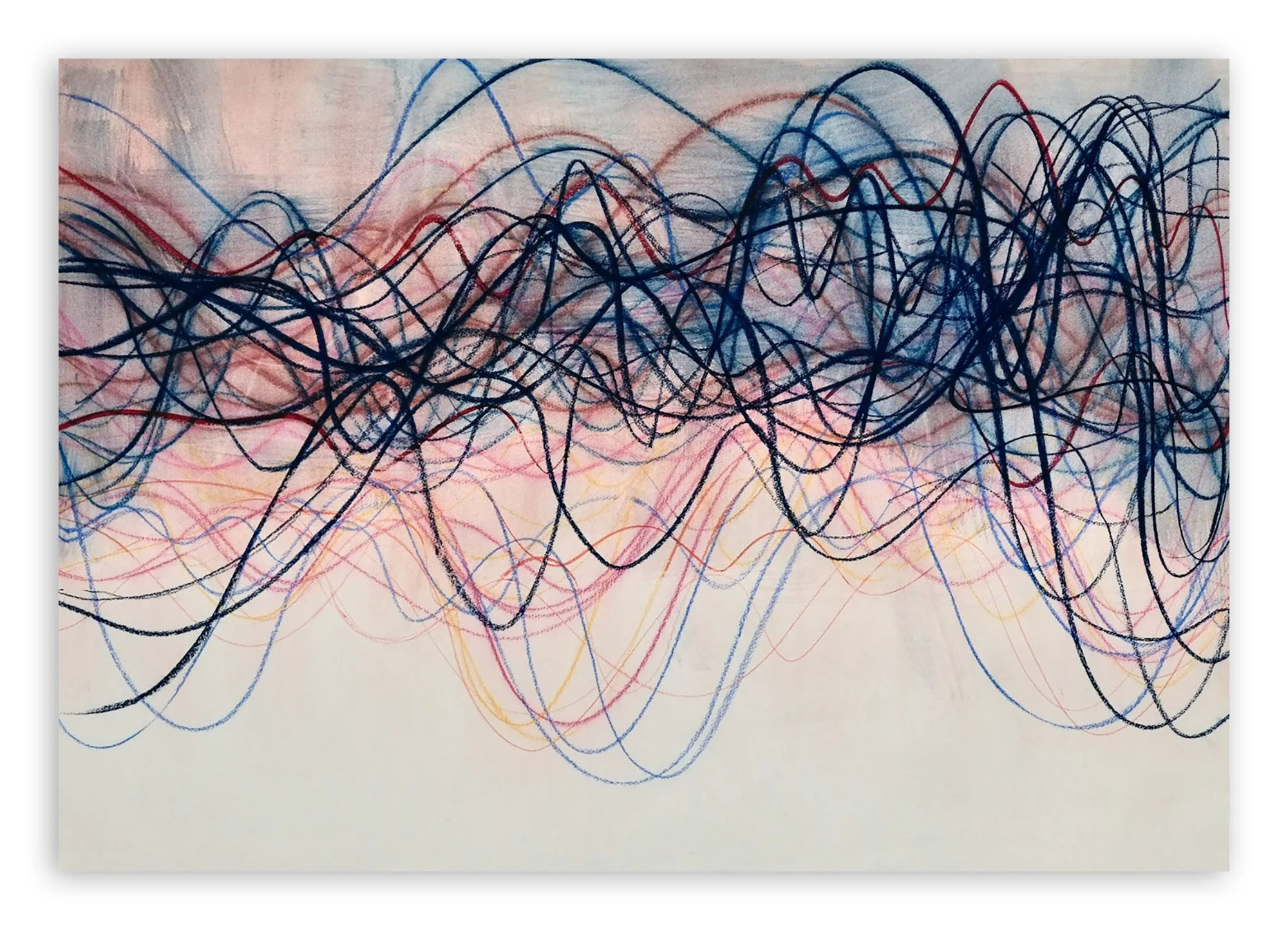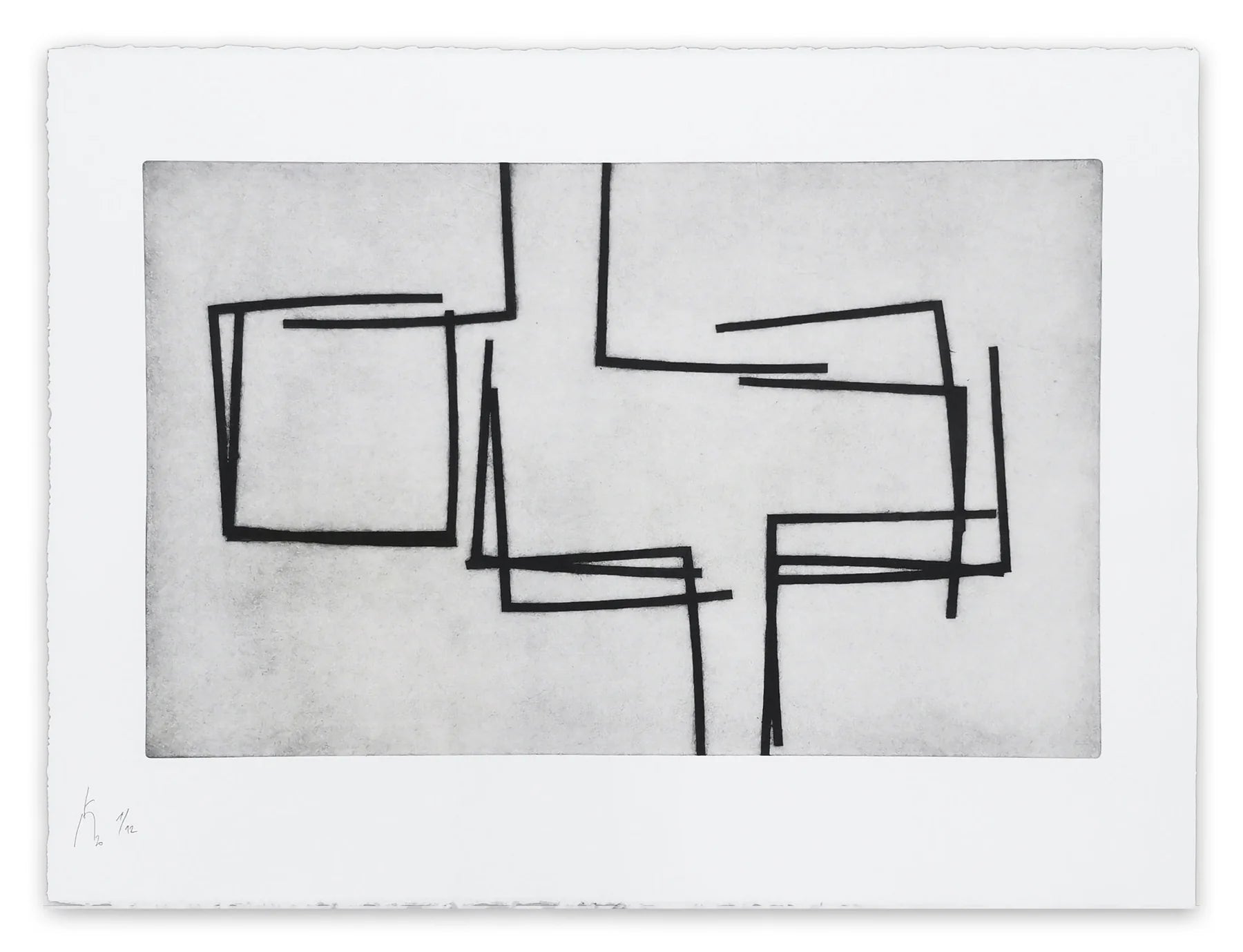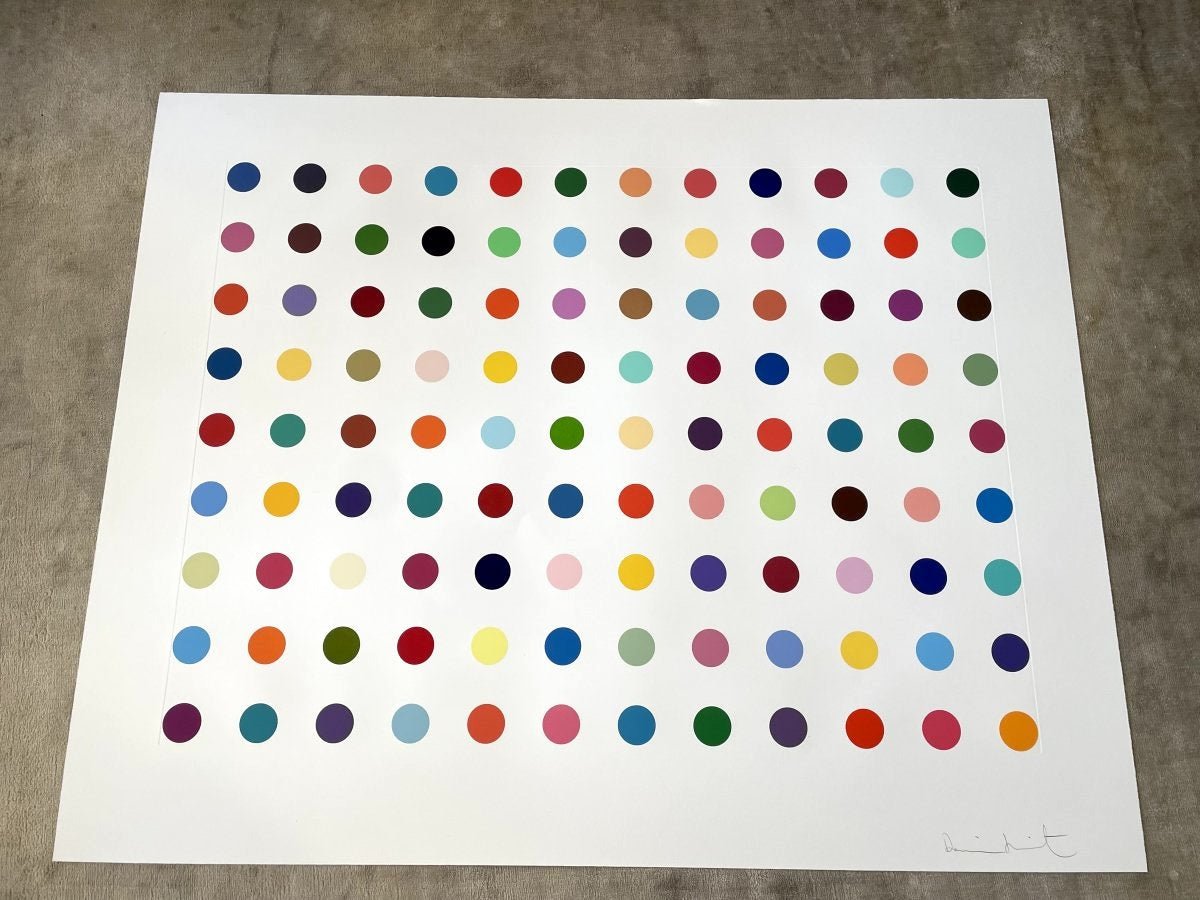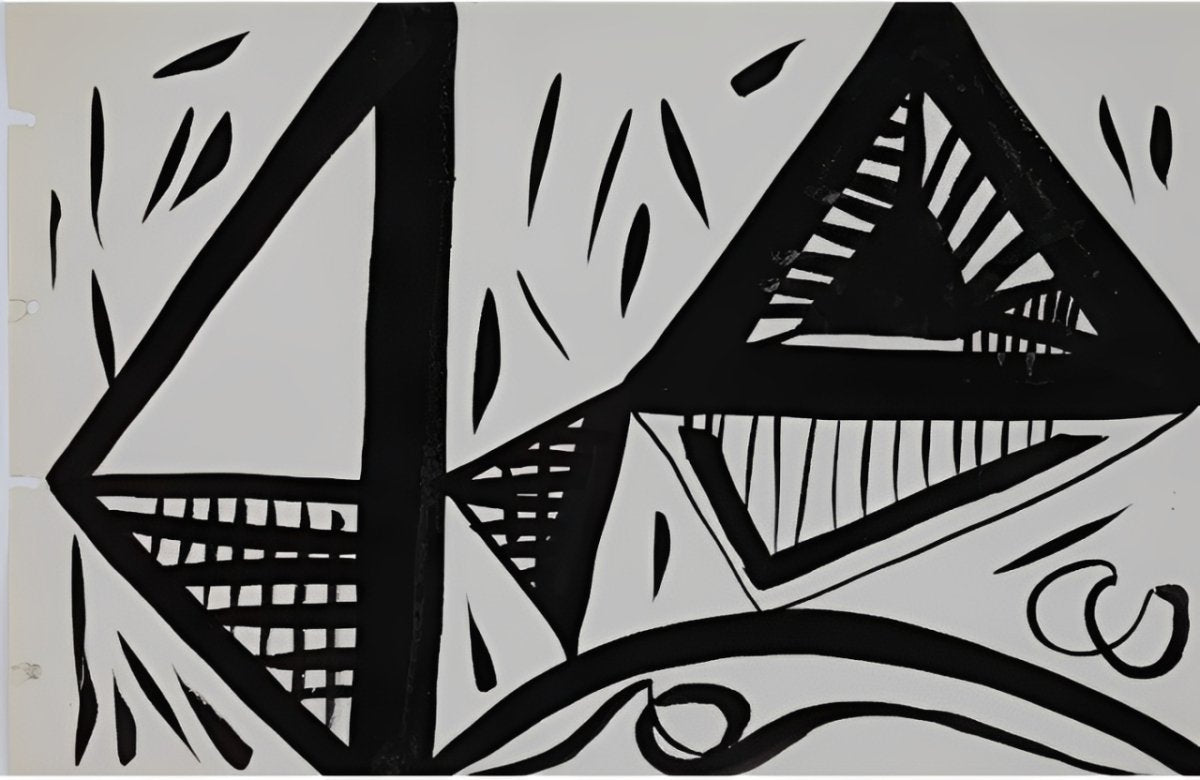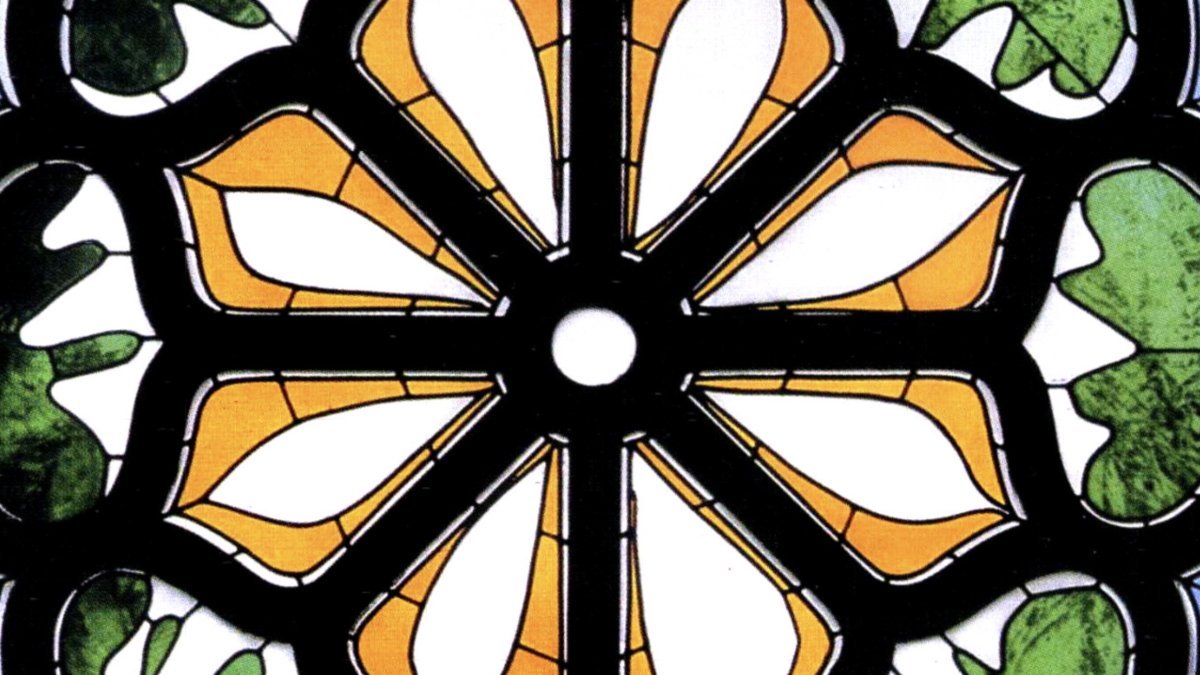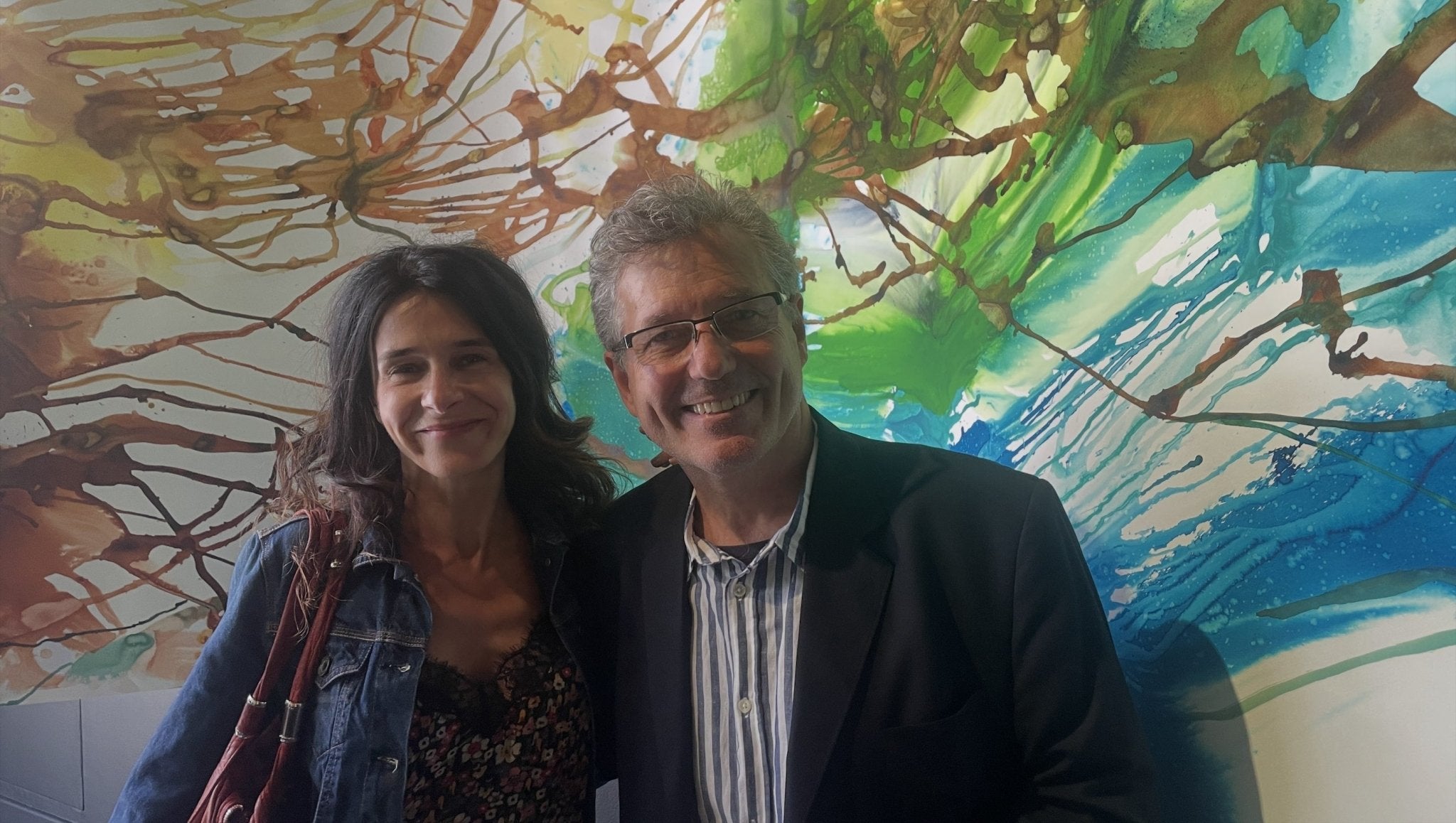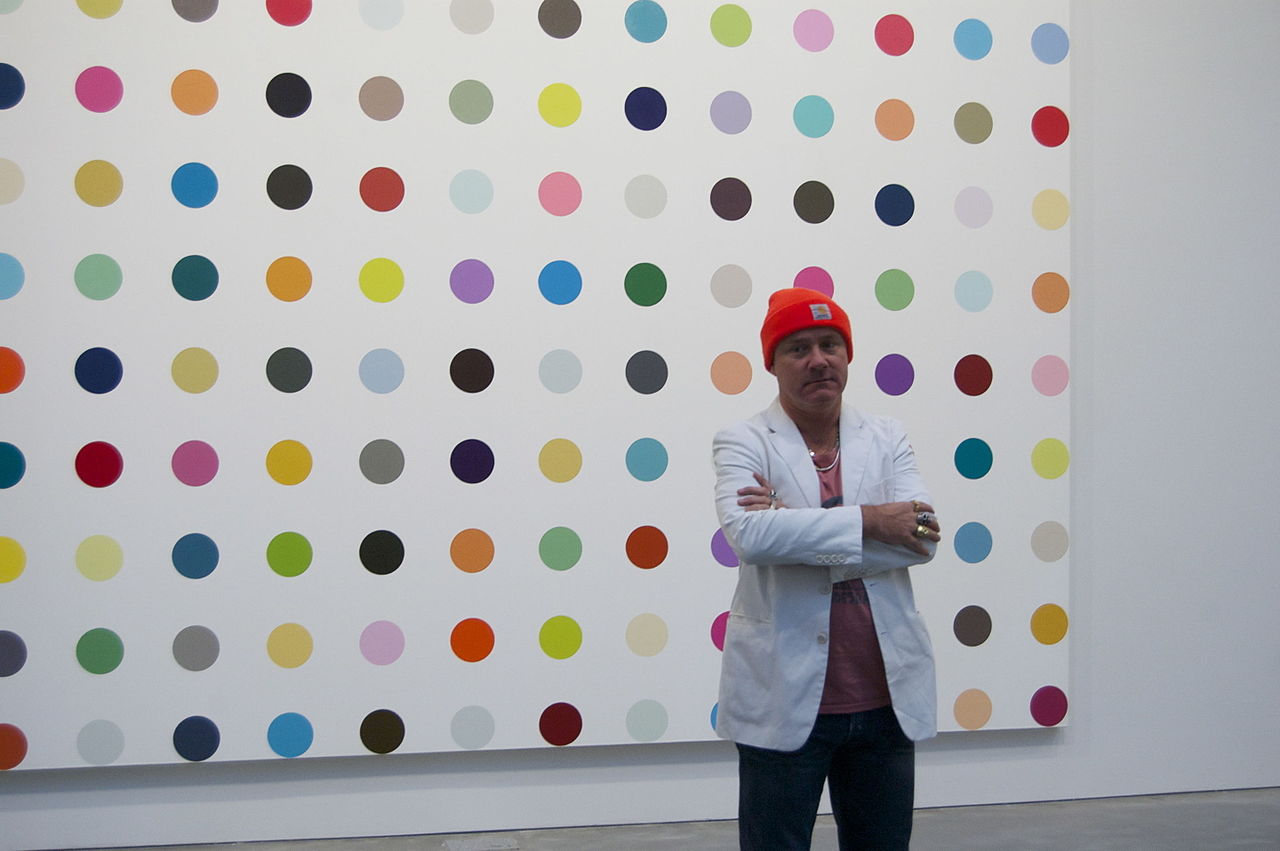
Damien Hirst: O Guia Definitivo para o Artista Contemporâneo Mais Provocativo da Grã-Bretanha
Damien Hirst é uma das figuras mais controversas e influentes da arte contemporânea, cuja abordagem revolucionária sobre mortalidade, ciência e comércio transformou fundamentalmente o mundo da arte. Nascido em Bristol em 1965, Hirst passou mais de três décadas desafiando noções convencionais de arte, beleza e morte, criando um corpo de trabalho que provoca debates intensos e alcança preços recordes. Embora não seja principalmente um artista abstrato no sentido tradicional, as explorações sistemáticas de Hirst — particularmente suas pinturas spot e spin — demonstram um engajamento rigoroso com cor, forma e acaso que se alinha às principais preocupações da arte abstrata. Sua habilidade de combinar rigor conceitual com impacto visceral, seja por meio de seus sistemas metódicos de cor ou suas obras confrontacionais em formol, lhe rendeu reconhecimento como o artista mais rico da Grã-Bretanha e uma das figuras culturais mais significativas do nosso tempo, com suas obras exibidas nos museus mais prestigiados do mundo e alcançando sucesso comercial sem precedentes.
Conteúdo
Fatos Rápidos
-
Nome Completo: Damien Steven Hirst
-
Nascimento: 7 de junho de 1965, em Bristol, Inglaterra
-
Nacionalidade: Britânico
-
Meios: Arte conceitual, escultura, instalação, pintura
-
Estilo Notável: Preservação em formol, pinturas spot, pinturas spin
-
Educação: Goldsmiths, University of London (1986-1989)
-
Principais Coleções: Tate Modern, MoMA, Coleção Saatchi, British Museum
-
Venda Recorde: £50 milhões por "For the Love of God" (2007)
-
Prêmios Notáveis: Turner Prize (1995)
-
Status Atual: O artista mais rico da Grã-Bretanha com patrimônio estimado em US$ 384 milhões (2020)
-
Técnicas Características: Preservação em formol, incrustação de diamantes, instalações farmacêuticas
-
Principais Períodos Artísticos:
-
Série História Natural (anos 1990): Animais preservados em formol
-
Pinturas Spot e Spin (anos 1980-presente): Explorações sistemáticas de cor
-
Obras com Diamantes (anos 2000): Materiais luxuosos criticando o materialismo
-
-
Obras Mais Famosas: "The Physical Impossibility of Death in the Mind of Someone Living" (1991), "For the Love of God" (2007), "Mother and Child (Divided)" (1993)
Biografia
A trajetória artística de Damien Hirst representa uma das narrativas mais provocativas e comercialmente bem-sucedidas da história da arte contemporânea. Nascido em Bristol durante o auge da Guerra Fria, sua vida inicial foi marcada por lutas da classe trabalhadora e rebeldia pessoal que mais tarde influenciariam sua abordagem confrontadora da arte. Essas experiências influenciaram profundamente sua exploração visceral da mortalidade, sistemas de crença e a mercantilização da arte.
Primeiros Anos e Desenvolvimento Artístico
O caminho de Damien Steven Hirst para a proeminência artística começou na cidade industrial de Leeds, onde foi criado após nascer em Bristol em 1965. Sua infância foi marcada por grandes turbulências, incluindo o divórcio dos pais quando ele tinha doze anos e uma adolescência rebelde que incluiu várias prisões por furto em lojas. Esses primeiros encontros com as duras realidades da vida e a autoridade institucional moldariam profundamente sua posterior exploração artística da mortalidade, vulnerabilidade e mecanismos de controle social.
Crescendo em uma família da classe trabalhadora, Hirst foi exposto às realidades cruas da vida desde cedo. Sua mãe trabalhava em vários empregos para sustentar a família, e a ausência do pai criou um vazio que mais tarde se manifestaria na exploração da perda e da ausência em sua arte. O jovem Hirst era conhecido por seu comportamento travesso e atitude questionadora em relação à autoridade — traços que o ajudariam a desafiar as convenções do mundo da arte. Seus primeiros encontros com a lei, embora problemáticos na época, o introduziram aos sistemas institucionais de controle e punição que mais tarde informariam sua crítica à autoridade médica e religiosa em obras como a série "Pharmacy".
Apesar das dificuldades acadêmicas e problemas comportamentais, Hirst demonstrou cedo talento artístico e interesse pelo desenho. Seus professores no ensino médio reconheceram seu potencial e incentivaram suas buscas artísticas, mesmo enquanto ele enfrentava dificuldades com as matérias acadêmicas tradicionais. Um professor particularmente influente o ajudou a entender que a arte poderia ser uma carreira legítima, não apenas um hobby. Essa validação inicial foi crucial para alguém de sua origem, onde carreiras artísticas eram frequentemente vistas como impraticáveis ou irreais.
Sua admissão no Jacob Kramer College em Leeds, de 1983 a 1985, marcou sua primeira educação formal em arte. A faculdade, conhecida por sua abordagem progressista à educação artística, o expôs a movimentos de arte contemporânea e incentivou o pensamento experimental. No entanto, Hirst achou o ambiente acadêmico restritivo e ansiava por um engajamento mais direto com o mundo fora da sala de aula. Sua insatisfação com abordagens puramente teóricas à criação artística influenciaria posteriormente sua preferência por experiências viscerais e imediatas em seu trabalho maduro.
Em uma decisão que chocou seus professores e família, Hirst abandonou brevemente a educação formal em arte para trabalhar na construção em Londres por dois anos. Esse período, longe de ser um desvio, provou ser formativo de maneiras inesperadas. Trabalhar com as mãos, manusear materiais industriais e experimentar as exigências físicas do trabalho manual lhe deu uma compreensão prática dos materiais e processos que mais tarde seriam destacados em sua arte. Os canteiros de obras o expuseram à estética industrial do aço, vidro e concreto que caracterizaria suas vitrines de formaldeído. Mais importante, o trabalho na construção reforçou sua abordagem anti-preciosa à criação artística e sua crença de que a arte deveria emergir da experiência do mundo real, e não da teoria acadêmica.
Durante seu tempo na indústria da construção em Londres, Hirst também vivenciou a vibrante vida noturna e a cultura underground da cidade. Ele frequentava clubes e galerias, absorvendo a energia da cena criativa de Londres nos anos 1980. Essa exposição à música punk, moda alternativa e movimentos subculturais influenciou sua compreensão posterior de como capturar a atenção do público e desafiar as sensibilidades convencionais. O ethos DIY da cultura punk ressoou particularmente com ele, reforçando sua crença de que o sucesso artístico exigia autopromoção e engajamento direto com o público.
Seu retorno à educação formal na Goldsmiths, University of London, de 1986 a 1989 marcou o verdadeiro início de sua carreira revolucionária. Nessa época, Hirst trouxe uma combinação única de esperteza de rua, experiência prática e ambição artística renovada para seus estudos. A Goldsmiths, renomada por sua orientação conceitual e tutores influentes como Michael Craig-Martin, forneceu a estrutura intelectual onde suas ideias provocativas puderam florescer. Craig-Martin, em particular, incentivava os estudantes a pensar além das categorias tradicionais de arte e a considerar os fundamentos conceituais de seu trabalho.
Na Goldsmiths, Hirst foi exposto ao trabalho de Marcel Duchamp, cujos ready-mades influenciariam profundamente sua abordagem à criação artística. Ele também teve contato com os escritos de filósofos franceses como Michel Foucault, cujas análises das estruturas de poder e controle institucional ressoavam com suas próprias experiências de autoridade. A ênfase da instituição no rigor conceitual, combinada com a sensibilidade prática e esperta de Hirst, criou uma visão artística única que desafiaria tanto as convenções do mundo da arte quanto as suposições sociais mais amplas sobre morte, ciência e comércio.
Durante seu tempo na Goldsmiths, Hirst começou a desenvolver a abordagem sistemática que caracterizaria seu trabalho maduro. Suas primeiras pinturas de pontos, embora inicialmente ofuscadas por contemporâneos mais talentosos, demonstravam seu interesse por imagens farmacêuticas e arranjos sistemáticos de cores. Ele passava horas na biblioteca da faculdade pesquisando livros médicos e catálogos farmacêuticos, fascinado pela apresentação clínica de informações sobre vida e morte. Essa pesquisa influenciaria não apenas suas pinturas de pontos, mas também sua crítica mais ampla à autoridade médica e à fé da sociedade nas soluções farmacêuticas.
Mais importante, durante esse período formativo, Hirst começou a entender que a apresentação e o contexto da arte eram tão cruciais quanto a própria arte. Ele observou como as carreiras de seus colegas estudantes eram moldadas não apenas pelo talento artístico, mas pela capacidade de fazer networking, autopromoção e compreender a dinâmica do mercado. Essa percepção influenciaria suas atividades curatoriais posteriores, seu relacionamento estratégico e seu revolucionário engajamento direto com o mercado, que transformaria a forma como artistas interagem com colecionadores e o público em geral.
O Movimento YBA e a Inovação Artística
Ainda estudante na Goldsmiths em 1988, Hirst organizou sua lendária primeira exposição, "Freeze", em um prédio abandonado da Port Authority nos Docklands de Londres. Esta exposição, que apresentava suas próprias obras ao lado das de colegas estudantes, incluindo Gary Hume, Michael Landy e Angela Bulloch, tornou-se o momento fundador do movimento Young British Artists (YBAs). A iniciativa de Hirst em organizar e financiar essa exposição demonstrou uma compreensão sem precedentes do ecossistema do mundo da arte além da mera criação, revelando um espírito empreendedor que definiria sua carreira. O título da exposição, "Freeze", provou ser profético — capturou um momento no tempo que se cristalizaria em um dos movimentos artísticos mais influentes do final do século XX.
A logística para montar o "Freeze" revelou o talento natural de Hirst para organização e promoção. Ele garantiu patrocínio da London Docklands Development Corporation, transformando o que poderia ter sido uma exposição estudantil em uma apresentação profissional que atraiu atenção séria do establishment artístico. O espaço industrial bruto, com seus pisos de concreto e paredes de tijolos expostos, forneceu o cenário perfeito para obras que desafiavam as noções tradicionais de beleza e refinamento. Hirst entendeu intuitivamente que o contexto era crucial — o ambiente duro e implacável do edifício Docklands reforçava a natureza confrontacional da arte exibida.
O convite estratégico de figuras influentes como Charles Saatchi, Norman Rosenthal e Nicholas Serota para o "Freeze" revelou a aguda percepção de mercado e habilidades de networking de Hirst. Em vez de simplesmente esperar ser descoberto, ele ativamente buscou a atenção daqueles que poderiam moldar carreiras e influenciar a opinião pública. Essa abordagem proativa para construir a carreira era incomum entre estudantes de arte, que tradicionalmente esperavam que galerias ou críticos descobrissem seu trabalho. A disposição de Hirst em assumir o controle do próprio destino se tornaria uma característica definidora do movimento YBA como um todo.
Este evento alterou fundamentalmente o cenário artístico da Grã-Bretanha ao criar uma plataforma visível para uma nova geração de artistas que desafiariam as hierarquias tradicionais do mundo da arte por meio de táticas de choque, espírito empreendedor e abordagens irreverentes às normas estabelecidas. O sucesso do "Freeze" demonstrou que jovens artistas não precisavam esperar pela validação institucional — eles podiam criar suas próprias oportunidades e construir seus próprios públicos. Essa ética DIY, emprestada da cultura punk e adaptada para o mundo da arte, tornou-se uma pedra angular da filosofia YBA.
Os YBAs se destacaram pelo que os críticos chamaram de "uma fusão nova e acessível de pop e conceitualismo", impregnada de uma sensibilidade distintamente britânica. Suas obras foram caracterizadas por uma provocação deliberada, projetada para atrair a atenção pública e crítica, democratizando a arte contemporânea ao torná-la acessível e envolvente para públicos mais amplos, mesmo através da controvérsia. Ao contrário das gerações anteriores de artistas britânicos que frequentemente buscavam validação em Paris ou Nova York, os YBAs eram unapologeticamente britânicos em suas referências e sensibilidades, utilizando desde jornais sensacionalistas até a cultura do futebol para criar arte que falasse diretamente à experiência britânica contemporânea.
A estética do movimento era deliberadamente anti-preciosa, abraçando materiais e temas que a arte tradicional evitava. Onde gerações anteriores poderiam ter trabalhado em mármore ou bronze, os YBAs usavam materiais cotidianos — formaldeído, recortes de jornal, camas desfeitas, animais em conserva. Essa democracia material refletia mudanças culturais mais amplas na Grã-Bretanha dos anos 1980, onde as barreiras de classe estavam sendo desafiadas e as hierarquias tradicionais questionadas. A arte dos YBAs incorporava o espírito empreendedor da Grã-Bretanha de Thatcher enquanto simultaneamente criticava seus valores e pressupostos.
Hirst emergiu como a principal figura do movimento e o artista mais identificável, desempenhando papéis como organizador, curador e conector estratégico que ampliaram tanto sua própria visibilidade quanto a de seus pares. Suas exposições subsequentes, incluindo "Modern Medicine" e "Gambler", continuaram a mostrar o trabalho dos YBAs enquanto o estabeleciam como o líder não oficial do movimento. Sua habilidade de gerar atenção da mídia — seja por meio de temas controversos ou declarações provocativas — fez dele o rosto público de uma geração que se recusava a ser ignorada ou marginalizada.
Durante esse período, Hirst começou a desenvolver suas técnicas e preocupações temáticas características que definiriam seu trabalho maduro. Suas primeiras obras com formaldeído, começando com "A Thousand Years" em 1990, estabeleceram seu método de usar materiais biológicos preservados para criar confrontos viscerais com a mortalidade. Essas obras transformaram o tradicional memento mori de lembretes simbólicos suaves em encontros físicos inevitáveis com a morte e a decadência, forçando os espectadores a confrontar ansiedades fundamentais sobre a existência que a sociedade normalmente evita. A apresentação clínica dessas obras, com suas vitrines minimalistas de aço e vidro, emprestou a autoridade estética da ciência enquanto subvertia suas reivindicações de objetividade e controle.
O impacto do movimento YBA foi além das obras individuais para abranger uma mudança fundamental na forma como a arte era apresentada, discutida e consumida. Eles entenderam que, em uma cultura cada vez mais saturada de mídia, os artistas precisavam se tornar performers e personalidades, não apenas criadores de objetos. Essa percepção se mostrou profética, antecipando a era das redes sociais, onde o sucesso artístico muitas vezes depende tanto do branding pessoal e do engajamento público quanto da realização criativa. O legado dos YBAs não está apenas em suas obras individuais, mas na transformação do papel do artista de outsider romântico para empreendedor cultural.
Período Maduro e Reconhecimento Internacional
As décadas de 1990 e 2000 marcaram a ascensão de Hirst como um fenômeno cultural global, com suas obras controversas gerando atenção midiática sem precedentes e sucesso comercial. Sua relação com o colecionador Charles Saatchi provou ser definidora para a carreira, fornecendo os recursos e a visibilidade necessários para criar obras ambiciosas e em grande escala como "The Physical Impossibility of Death in the Mind of Someone Living" (1991). Essa relação simbiótica entre patrono e artista demonstrou como colecionadores influentes podem acelerar a trajetória de um artista de talento emergente a reconhecimento internacional, ao mesmo tempo em que destacava as complexas dinâmicas de poder que moldam as carreiras na arte contemporânea.
O apoio de Saatchi foi além do simples respaldo financeiro, incluindo orientação estratégica de carreira e exposição internacional por meio de sua influente galeria. O olhar do colecionador para obras provocativas e amigáveis à mídia alinhava-se perfeitamente com os instintos de Hirst para gerar atenção pública. No entanto, essa relação também criou dependências que mais tarde se tornariam tensas à medida que Hirst buscava maior autonomia sobre sua carreira e presença no mercado. A tensão entre independência artística e apoio comercial tornou-se um tema definidor do período maduro de Hirst, influenciando sua decisão eventual de contornar completamente os sistemas tradicionais de galerias.
A exposição "Sensation" de 1997 na Royal Academy, apresentando obras controversas de vários YBAs, transformou exposições de arte em grandes eventos midiáticos e estabeleceu Hirst como um mestre provocador. A exposição gerou "milhas de colunas" de cobertura midiática e indignação pública devido às obras controversas, demonstrando que a controvérsia poderia ser um poderoso motor de engajamento público e reconhecimento internacional. "Sensation" tornou-se um fenômeno cultural que transcendeu os limites tradicionais do mundo da arte, atraindo visitantes que nunca haviam pisado em uma galeria antes e provocando debates nacionais sobre o papel da arte na sociedade.
O sucesso da exposição revelou a compreensão sofisticada de Hirst sobre a dinâmica da mídia e a psicologia pública. Ele reconheceu que, em um cenário midiático cada vez mais saturado, a arte precisava competir com entretenimento, política e cultura de celebridades pela atenção do público. Suas obras foram projetadas não apenas para provocar contemplação estética, mas para gerar reações imediatas e viscerais que se traduzissem em cobertura midiática e discurso público. Essa estratégia, embora criticada por alguns como mero sensacionalismo, provou ser notavelmente eficaz em estabelecer a arte contemporânea como um tema legítimo da conversa cultural mainstream.
Durante esse período, a visão artística madura de Hirst cristalizou-se em torno de sua exploração sistemática da mortalidade através de várias séries e mídias. Sua série "Natural History", apresentando animais preservados em formaldeído, desafiava os espectadores a confrontar a morte literalmente, e não metaforicamente. Essas obras representaram uma ruptura radical com a escultura tradicional, transformando os espaços das galerias em laboratórios quase científicos onde os visitantes encontravam espécimes preservados que pareciam simultaneamente vivos e mortos. A apresentação clínica dessas obras emprestava a autoridade estética da ciência médica enquanto subvertia suas reivindicações de objetividade e controle sobre a vida e a morte.
Suas pinturas de pontos, frequentemente executadas por assistentes de estúdio, exploraram imagens farmacêuticas e arranjos sistemáticos de cores enquanto levantavam questões fundamentais sobre autoria e produção em massa na arte. A franca admissão de Hirst de que ele pessoalmente pintou apenas cinco das centenas de pinturas de pontos desafiou as noções românticas de criação artística e antecipou debates contemporâneos sobre arte gerada por IA. Sua afirmação de que "o verdadeiro ato criativo é a concepção, não a execução" reposicionou o artista como diretor conceitual em vez de artesão, um modelo que influenciaria inúmeros artistas contemporâneos.
As pinturas spin, criadas aplicando tinta em telas montadas em plataformas giratórias, abraçaram o acaso e processos mecânicos enquanto removiam a mão do artista da criação direta. Essas obras, inspiradas em brinquedos artísticos infantis, demonstraram a capacidade de Hirst de encontrar significado profundo em processos aparentemente simples. O formato circular dessas pinturas pode ser interpretado como metáforas para ciclos de vida, repetição e mortalidade, conectando-as às suas preocupações temáticas mais amplas enquanto exploram a tensão entre controle e aleatoriedade que caracteriza tanto a criação artística quanto a própria existência.
O auge desse período veio com "For the Love of God" (2007), um crânio de platina incrustado com 8.601 diamantes que supostamente foi vendido por £50 milhões. Esta obra representou o ápice do seu tema memento mori enquanto simultaneamente criticava a obsessão do mercado de arte por luxo e valor. A peça forçou um confronto direto com o desejo da humanidade de transcender a morte por meios materiais, ao mesmo tempo em que destacava a futilidade última da riqueza diante da mortalidade. Seu custo de produção de £14 milhões e o preço recorde de venda fizeram dela tanto um comentário sobre o excesso do mercado de arte quanto sobre a mortalidade humana.
Durante esse período maduro, Hirst demonstrou uma habilidade sem precedentes para atuar simultaneamente como artista, empreendedor e comentarista cultural. Seu engajamento direto com a mídia, seu uso estratégico da controvérsia e sua compreensão sofisticada das dinâmicas de mercado o estabeleceram como um novo tipo de artista-celebridade capaz de moldar o discurso público enquanto alcançava um sucesso comercial extraordinário. Essa abordagem multifacetada à prática artística influenciaria toda uma geração de artistas que reconheceram que o sucesso contemporâneo exigia não apenas talento criativo, mas também perspicácia nos negócios e habilidade com a mídia.
Em meados dos anos 2000, Hirst havia alcançado um nível de reconhecimento internacional que poucos artistas vivos atingem. Suas obras foram exibidas em grandes museus ao redor do mundo, suas exposições atraíram públicos recordes e seus preços de mercado continuaram a subir. No entanto, esse sucesso também trouxe um escrutínio maior sobre seus métodos e motivações, com críticos questionando se suas conquistas comerciais haviam comprometido sua integridade artística. Esses debates, longe de diminuir sua influência, apenas reforçaram sua posição no centro do discurso da arte contemporânea e o estabeleceram como uma figura que não podia ser ignorada, fosse celebrada ou criticada.
Impacto Contemporâneo e Legado
No século 21, a influência de Hirst se estendeu muito além das obras individuais para abranger mudanças fundamentais em como a arte é criada, comercializada e compreendida. Seu leilão de 2008 "Beautiful Inside My Head Forever" na Sotheby's foi revolucionário—a primeira vez que um artista de sua estatura contornou galerias para vender diretamente ao público. A venda gerou £111 milhões por 218 obras durante a crise financeira, demonstrando tanto seu poder de mercado quanto a natureza especulativa do mercado de arte contemporânea. Esse evento sem precedentes ocorreu precisamente quando o Lehman Brothers faliu, criando uma justaposição surreal entre o excesso do mundo da arte e a catástrofe econômica global que parecia validar a crítica de longa data de Hirst ao capitalismo e materialismo.
O momento do leilão não foi por acaso—Hirst entendeu que momentos de crise frequentemente revelam verdades fundamentais sobre sistemas de valor e prioridades sociais. Ao vender diretamente para colecionadores enquanto a economia mais ampla desmoronava, ele criou uma obra performativa tão conceitualmente sofisticada quanto qualquer uma de suas peças em formol. O evento demonstrou que o mercado de arte de alto padrão operava segundo sua própria lógica, aparentemente imune às forças econômicas que afetavam as pessoas comuns. Essa metacomentário sobre a relação da arte com riqueza e poder adicionou outra camada à sua contínua exploração da mortalidade e do significado.
O modelo de produção em estilo fábrica de Hirst, empregando inúmeros assistentes para executar seus conceitos, redefiniu a autoria artística para a era contemporânea. Sua afirmação de que o "ato criativo real é a concepção, não a execução" o posiciona como um diretor conceitual em vez de um artesão tradicional, antecipando debates contemporâneos sobre arte gerada por IA e a separação da ideia da execução. Essa abordagem, embora controversa, influenciou inúmeros artistas contemporâneos que agora empregam abertamente assistentes, colaboram com fabricantes ou usam ferramentas digitais para realizar suas visões. O modelo tornou-se tão normalizado que as questões de autoria na arte contemporânea agora focam mais na originalidade conceitual do que na execução manual.
Sua influência na educação artística tem sido igualmente profunda. Escolas de arte em todo o mundo agora ensinam cursos sobre empreendedorismo artístico, engajamento com o mercado e construção de marca — assuntos que seriam considerados antitéticos à prática artística há apenas algumas décadas. A carreira de Hirst demonstrou que sucesso comercial e integridade artística não precisam ser mutuamente exclusivos, inspirando uma geração de artistas a assumir o controle de suas próprias carreiras em vez de esperar passivamente pelo reconhecimento institucional. Essa mudança alterou fundamentalmente a relação entre artistas e mercado, criando novas possibilidades para independência criativa e financeira.
Suas obras recentes continuam a ultrapassar limites enquanto exploram novos temas e tecnologias. O monumental "Treasures from the Wreck of the Unbelievable" (2017) na Bienal de Veneza criou uma arqueologia ficcional elaborada que questionava a verdade histórica e a autenticidade. O projeto, que custou milhões para ser produzido e contou com centenas de artefatos fabricados, representou sua tentativa mais ambiciosa de borrar as fronteiras entre fato e ficção. Ao criar uma narrativa mitológica completa apoiada por evidências arqueológicas aparentemente autênticas, Hirst desafiou os espectadores a questionar não apenas a relação da arte com a verdade, mas a construção do significado e valor pela história.
O projeto Veneza também demonstrou a contínua evolução de Hirst como contador de histórias e construtor de mundos. Diferentemente de suas obras anteriores que confrontavam os espectadores com experiências viscerais imediatas, "Treasures" exigia engajamento sustentado e curiosidade intelectual. Os visitantes precisavam navegar por narrativas complexas, decodificar sistemas simbólicos e questionar suas próprias suposições sobre autenticidade e valor. Essa mudança para experiências mais complexas e em camadas refletiu sua crescente confiança na sofisticação do público e seu próprio desejo de criar obras que recompensassem múltiplas visualizações e profunda contemplação.
Sua série "Cherry Blossoms" (2018-2021) ofereceu celebrações raras de beleza e renovação, sugerindo uma expansão de seu alcance emocional e filosófico além de seu foco tradicional na mortalidade e decadência. Essas pinturas em grande escala, com suas cores explosivas e energia gestual, demonstraram que mesmo em sua carreira posterior, Hirst continuava capaz de surpreender tanto críticos quanto admiradores. A série sugeriu uma possível reconciliação com a beleza e o otimismo que estiveram amplamente ausentes em seus trabalhos anteriores, mantendo ainda conexões com temas de transitoriedade e passagem do tempo.
As "Robot Paintings" (2024) exploram ainda mais questões de autoria e tecnologia na criação artística, posicionando Hirst na vanguarda dos debates sobre inteligência artificial e produção criativa. Essas obras, criadas por máquinas programadas para pintar segundo as especificações de Hirst, levam seu interesse de longa data pela reprodução mecânica ao seu extremo lógico. Ao remover não apenas sua mão, mas sua presença física do processo criativo, essas pinturas levantam questões fundamentais sobre o que constitui a criação artística em uma era de automação crescente.
Hoje, trabalhando em seus estúdios na Inglaterra, Hirst permanece uma presença duradoura na arte contemporânea cuja influência continua a se expandir por múltiplos domínios. Sua abordagem — rigorosa, provocativa e comercialmente astuta — o tornou um ponto de referência para gerações de artistas mais jovens que veem em sua carreira um modelo de como manter a integridade artística enquanto alcançam um sucesso comercial sem precedentes. Seu legado vai além das obras individuais para abranger uma redefinição fundamental do que significa ser um artista no mundo globalizado, orientado pelo mercado e saturado de mídia do século XXI.
Talvez o mais significativo seja que Hirst demonstrou que a arte contemporânea pode permanecer relevante e vital ao se envolver diretamente com as questões mais prementes de seu tempo. Seu trabalho continua a abordar questões de mortalidade, crença e valor que ressoam através de fronteiras culturais e geracionais. Em uma era de incerteza global, crise climática e disrupção tecnológica, seu exame destemido da vulnerabilidade humana e da falha sistêmica parece mais urgente do que nunca. Sua influência na cultura contemporânea vai muito além do mundo da arte, moldando como pensamos sobre autenticidade, valor e significado em um mundo cada vez mais complexo e interconectado.
Perguntas Frequentes
O Que Torna a Arte de Damien Hirst Tão Importante?
A importância de Damien Hirst reside em seu confronto revolucionário com a mortalidade e sua transformação do mercado de arte contemporânea. Sua exploração visceral da morte, combinada com sua abordagem empreendedora à distribuição de arte, redefiniu tanto a prática artística quanto as possibilidades comerciais. Suas obras forçam os espectadores a confrontar ansiedades fundamentais sobre a vida e a morte enquanto simultaneamente criticam sistemas de crença na ciência, religião e capitalismo. Além da inovação artística, ele alcançou sucesso comercial sem precedentes, tornando-se o artista mais rico da Grã-Bretanha com um patrimônio estimado em US$384 milhões.
Quais Técnicas Damien Hirst Usa em Suas Obras de Arte?
A técnica mais distintiva de Hirst envolve preservar animais em formaldeído dentro de tanques minimalistas de aço e vidro, criando confrontos diretos com a mortalidade. Para suas pinturas de pontos, ele cria arranjos sistemáticos de pontos coloridos sem repetir cores dentro de uma única obra, frequentemente executadas por assistentes de estúdio. Suas pinturas giratórias são criadas aplicando tinta em telas montadas em plataformas giratórias, abraçando o acaso e processos mecânicos. Ele também trabalha com materiais de luxo como diamantes e platina para criar comentários provocativos sobre riqueza.
Por Que Damien Hirst Usa Animais Mortos em Sua Arte?
Hirst usa animais preservados para criar confrontos diretos e viscerais com a mortalidade que não podem ser ignorados ou intelectualizados. Ao contrário das representações simbólicas da morte, suas apresentações literais forçam os espectadores a experimentar a realidade da mortalidade física e emocionalmente. Essa abordagem transforma os tradicionais memento mori de lembretes suaves em encontros inevitáveis com nossa própria existência finita. Seu objetivo é estimular o debate sobre a vida e a morte, acreditando que "olhar para a morte nos devolve à vida com mais vigor e energia."
Qual é a Obra Mais Famosa de Damien Hirst?
"The Physical Impossibility of Death in the Mind of Someone Living" (1991), apresentando um tubarão-tigre preservado em formaldeído, é considerada sua obra mais icônica e a peça emblemática da arte britânica dos anos 1990. No entanto, "For the Love of God" (2007), um crânio de platina incrustado com 8.601 diamantes, alcançou o maior preço por uma obra de um artista vivo, £50 milhões. Ambas as obras exemplificam sua exploração da mortalidade por meio de abordagens diferentes — confronto visceral e excesso material.
Quanto Custam as Obras de Arte de Damien Hirst?
As obras de Hirst alcançam alguns dos preços mais altos na arte contemporânea. Seu crânio de diamante supostamente foi vendido por £50 milhões, enquanto grandes obras em formaldeído regularmente são vendidas por milhões. Pinturas grandes de pontos podem ultrapassar US$1 milhão, enquanto pinturas de borboletas variam de US$100.000 a US$2 milhões. No entanto, os preços variam significativamente com base no tamanho, período e meio, com obras menores e gravuras disponíveis em faixas de preço mais baixas. Seu mercado permanece forte apesar de algumas flutuações após a crise financeira de 2008.
Quais Materiais Damien Hirst Usa?
Hirst trabalha principalmente com solução de formaldeído, aço e vidro para suas obras de animais preservados. Ele usa tinta doméstica e tela para suas pinturas de pontos e giros, frequentemente aplicadas por assistentes de estúdio. Para obras de luxo como "For the Love of God", emprega materiais preciosos incluindo platina, diamantes e crânios humanos. Ele também cria instalações usando produtos farmacêuticos, espelhos, vidro e vários materiais biológicos, incluindo asas de borboleta e cabeças de vaca.
Como Damien Hirst Influenciou a Arte Contemporânea?
A influência de Hirst na prática da arte contemporânea é multifacetada:
- Sua abordagem sistemática à criação artística influenciou como os artistas se relacionam com a produção industrial
- Seu uso de materiais não tradicionais legitimou definições ampliadas de mídias artísticas
- Seu engajamento direto com o mercado pioneirou novos modelos para relações entre artista e colecionador
- Seu modelo de produção em fábrica antecipou debates contemporâneos sobre IA e autoria artística
- Suas táticas de choque demonstraram o poder contínuo da arte para provocar o discurso público
Onde Posso Ver a Obra de Damien Hirst?
A obra de Hirst é exibida em grandes museus ao redor do mundo, incluindo:
- Tate Modern, Londres
- Museum of Modern Art (MoMA), Nova York
- Saatchi Gallery, Londres
- Palazzo Grassi, Veneza
- National Gallery of Australia, Canberra
- Centre Pompidou, Paris
Sua exposição recente mais abrangente foi "Treasures from the Wreck of the Unbelievable" na Bienal de Veneza em 2017.
Damien Hirst Ainda Está Criando Arte (em agosto de 2025)?
Sim, Hirst continua a trabalhar em seus estúdios na Inglaterra, embora em um ritmo um pouco reduzido em comparação com seus anos de auge. Séries recentes incluem as pinturas "Cherry Blossoms" (2018-2021), "Civilisation Paintings" (2024) e "Robot Paintings" (2024) criadas com máquinas programadas. Ele permanece ativo tanto na criação de novas obras quanto na supervisão de suas extensas operações de estúdio, continuando a explorar temas como mortalidade, beleza e tecnologia.
Análise de Obras Notáveis
Ao longo de sua carreira, Damien Hirst criou inúmeras obras inovadoras que redefiniram a relação da arte contemporânea com a mortalidade, a ciência e o comércio. Suas peças mais significativas abrangem várias séries e décadas, cada uma contribuindo de forma única para sua exploração das ansiedades humanas fundamentais.
A Impossibilidade Física da Morte na Mente de Alguém Vivo (1991)

Esta obra icônica apresenta um tubarão-tigre de 14 pés imerso em formaldeído dentro de uma vitrine minimalista. Comissionada por Charles Saatchi por £50.000, tornou-se a obra emblemática da arte britânica dos anos 1990 e a peça mais controversa da carreira de Hirst. O próprio título desafia os espectadores a realmente compreender o significado da morte, enquanto a presença imponente do tubarão cria um confronto visceral imediato com a mortalidade. O poder da obra reside em sua literalidade—ao contrário das representações simbólicas da morte, o predador preservado força um encontro imediato e físico com a mortalidade. Notavelmente, o tubarão original teve que ser substituído em 2004 devido à decomposição inevitável, reforçando paradoxalmente o tema da obra sobre os limites da preservação.
Pelo Amor de Deus (2007)

Este molde de platina de um crânio humano do século XVIII, incrustado com 8.601 diamantes impecáveis, incluindo um diamante rosa de 52,4 quilates na testa, representa o ápice do tema memento mori de Hirst. Custando £14 milhões para produzir, supostamente foi vendido por £50 milhões, tornando-se o preço mais alto já pago por uma obra de um artista vivo. A obra força um confronto direto com o desejo da humanidade de transcender a morte por meios materiais enquanto destaca a futilidade da riqueza diante da mortalidade. Sua opulência intencional serve como crítica à obsessão do mercado de arte por valor e luxo, incorporando a mercantilização da arte no século XXI.
Mãe e Filho (Divididos) (1993)

Esta obra poderosa apresenta uma vaca e um bezerro, cada um bissetado e exibido em quatro vitrines separadas cheias de formaldeído. Os visitantes podem caminhar entre as metades, criando uma perspectiva imersiva, quase cirúrgica, que desafia os espectadores a confrontar a fisicalidade crua da existência e seu fim. A obra rendeu a Hirst o prestigioso Prêmio Turner em 1995 e elimina noções sentimentais de "mãe e filho" para apresentá-los como entidades biológicas sujeitas a processos físicos.
Mil Anos (1990)

Uma das primeiras e mais poderosas instalações de Hirst consiste em uma grande vitrine dividida em duas seções: uma contendo a cabeça apodrecida de uma vaca, a outra abrigando uma colônia de moscas que se alimentam da carne putrefata, se reproduzem e eventualmente morrem. Um insectocutor (matador elétrico de moscas) introduz um elemento de morte arbitrária no ambiente controlado. Esta obra cria um ecossistema autônomo e acelerado de vida e morte, forçando os espectadores a confrontar a realidade crua da decomposição e mortalidade enquanto simboliza finais imprevisíveis e frequentemente violentos da vida.
Série de Pinturas de Pontos (1986-presente)

Caracterizadas por fileiras de pontos coloridos uniformemente espaçados, sem repetição de cor dentro de uma única pintura, essas obras fazem referência a estruturas moleculares de substâncias potencialmente letais e viciantes. A estética altamente controlada, quase científica, reflete o interesse de Hirst em classificação e farmacêuticos, enquanto a referência a substâncias letais adiciona uma corrente sombria à sua aparência alegre. Muitas pinturas de pontos foram executadas por assistentes de estúdio, com Hirst afirmando ter pintado apenas cinco, levantando questões importantes sobre autoria e produção em massa na arte contemporânea.
Tesouros do Naufrágio do Inacreditável (2017)

Esta instalação monumental, apresentada na Bienal de Veneza, pretende ser artefatos de um naufrágio fictício de 2.000 anos na costa africana. A exposição compreende centenas de objetos em mármore, ouro, bronze, cristal, jade e malaquita, alguns incrustados com coral e organismos marinhos. O projeto representa a tentativa mais ambiciosa de Hirst de entrelaçar fato e ficção, questionando a verdade histórica e a autenticidade enquanto critica como o valor é atribuído aos objetos com base na proveniência e narrativa percebidas.
Essas obras não apenas exibem a inovação técnica de Hirst, mas também demonstram sua habilidade única de combinar impacto visceral com profundidade conceitual. De animais preservados a arranjos sistemáticos de cores, cada peça contribui para sua exploração da mortalidade, sistemas de crença e os mecanismos da cultura contemporânea.
Legado, Impacto & Informações de Mercado
A influência de Damien Hirst na arte contemporânea vai muito além de suas conquistas pessoais, remodelando fundamentalmente tanto a prática artística quanto o mercado de arte. Sua abordagem confrontadora da mortalidade e suas estratégias empreendedoras de mercado criaram um legado duradouro que continua a influenciar artistas e a comandar valores extraordinários no mercado.
Desempenho no Mercado
Hirst está consistentemente entre os artistas vivos mais comercialmente bem-sucedidos do mundo, com riqueza estimada em US$ 384 milhões em 2020. Sua presença no mercado é notável pela estabilidade e crescimento contínuo em diferentes estilos e períodos. O leilão "Beautiful Inside My Head Forever" em 2008 gerou £111 milhões, demonstrando demanda sustentada dos colecionadores mesmo durante a crise financeira. Suas vendas recordes incluem "For the Love of God" por £50 milhões e múltiplas obras vendidas por mais de £10 milhões. No entanto, análises de mercado mostram que seus preços mais altos foram alcançados em 2007-2008, com algumas obras passando por correções de preço em vendas subsequentes, refletindo a volatilidade mais ampla do mercado de arte contemporânea.
Reconhecimento Institucional
O trabalho de Hirst está representado em praticamente todas as principais coleções de museus no mundo. Suas comissões públicas e grandes retrospectivas trouxeram a arte contemporânea para o discurso cultural mainstream. A controversa exposição "Sensation" em 1997 transformou a forma como as exposições de arte contemporânea são concebidas e comercializadas, estabelecendo o modelo para grandes mostras de arte contemporânea. Grandes retrospectivas em instituições como Tate Modern (2012) e sua monumental apresentação na Bienal de Veneza (2017) confirmaram sua posição como um dos artistas mais significativos da era contemporânea.
Impacto na Prática Contemporânea
A influência de Hirst na prática da arte contemporânea é multifacetada:
- Sua abordagem sistemática à criação artística influenciou como os artistas se relacionam com a produção industrial
- Seu uso de materiais não tradicionais legitimou definições ampliadas de mídias artísticas
- Seu engajamento direto com o mercado pioneirou novos modelos para relações entre artista e colecionador
- Seu modelo de produção em fábrica antecipou debates contemporâneos sobre IA e autoria artística
- Sua disposição para ultrapassar limites abriu novas possibilidades para formas experimentais e narrativas desafiadoras
Impacto Cultural
Além do mundo da arte, a influência de Hirst pode ser vista em:
- Arquitetura e design, onde suas abordagens sistemáticas influenciaram a teoria estética contemporânea
- Cultura popular, onde suas imagens icônicas foram referenciadas em filmes, moda e mídia digital
- Discurso público sobre o papel da controvérsia e provocação na cultura contemporânea
- Comunidades médicas e científicas, onde seu trabalho provocou discussões sobre a ética da preservação e exibição
Recepção Acadêmica e Crítica
O trabalho de Hirst gerou ampla atenção acadêmica, com inúmeras publicações, dissertações e estudos dedicados à sua prática. Suas declarações teóricas e entrevistas tornaram-se leituras essenciais nas escolas de arte, influenciando novas gerações de artistas. Os debates contínuos sobre sua obra — desde questões de autoria até considerações éticas — continuam a moldar o discurso da arte contemporânea e a forçar um exame crítico do papel da arte na sociedade.
Contexto do Mercado Contemporâneo
Hoje, a posição de mercado de Hirst permanece forte, com suas obras apresentando desempenho consistente em leilões e vendas em galerias. Sua influência se estende ao mercado mais amplo da arte contemporânea, onde seu sucesso ajudou a estabelecer preços mais altos para a arte conceitual. Colecionadores relatam interesse contínuo tanto em suas obras com formaldeído quanto em suas pinturas sistemáticas, com demanda particular de compradores institucionais e colecionadores privados sérios que reconhecem sua importância histórica.
Legado Futuro
Enquanto Hirst continua a trabalhar em seus estúdios na Inglaterra, sua influência não dá sinais de diminuir. Sua abordagem metódica à criação artística, combinada com sua profundidade filosófica e perspicácia comercial, assegura sua posição como um dos artistas mais significativos do último meio século. Seu trabalho continua a inspirar novas interpretações e abordagens, sugerindo que seu impacto na história da arte perdurará por muito tempo. As questões que ele levantou sobre mortalidade, sistemas de crença e a mercantilização da arte permanecem urgentemente relevantes em nosso momento contemporâneo, garantindo sua relevância duradoura para futuras gerações de artistas e pensadores.
Outros Artigos Sobre Hirst e Arte Conceitual
O Movimento dos Young British Artists: Redefinindo a Arte Contemporânea
O que é Arte Conceitual? Definição e Exemplos
Mercado de Arte Contemporânea: Tendências e Oportunidades de Investimento
Táticas de Choque na Arte Contemporânea: Quando a Arte Desafia a Sociedade
Compre uma Obra de Arte Abstrata de Damien Hirst
Nosso departamento de Vendas Privadas tem o prazer de apresentar uma obra significativa de Damien Hirst: Ellipticine, que explora temas de beleza sistemática e rigor conceitual que remetem às pinturas de pontos de Hirst, disponível para venda abaixo. Esta peça em grande escala demonstra como os artistas abstratos contemporâneos continuam a se envolver com questões de ordem, acaso e significado que Hirst pioneiramente abordou em suas obras sistemáticas, oferecendo aos colecionadores a oportunidade de adquirir uma obra que une arte conceitual com pura abstração.
